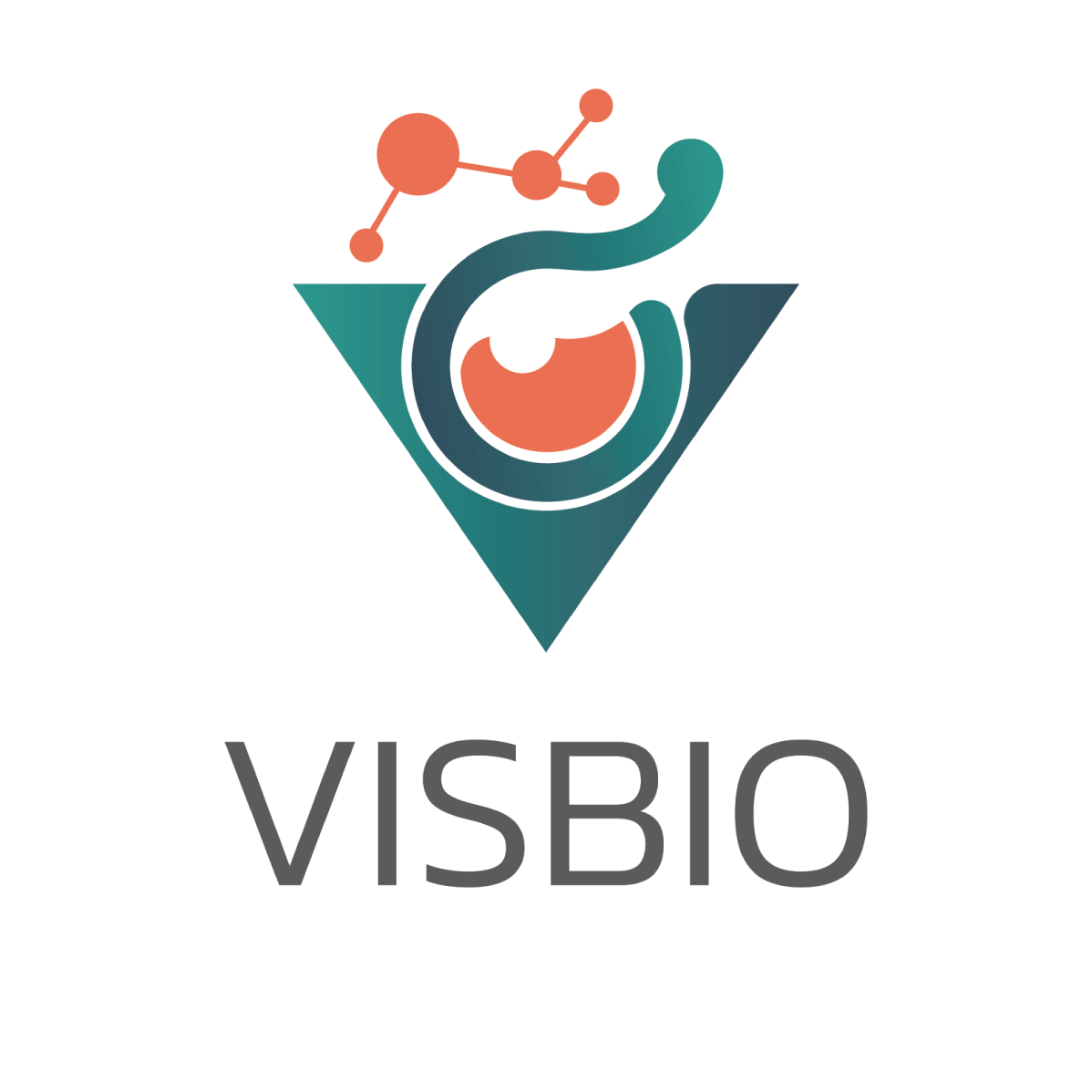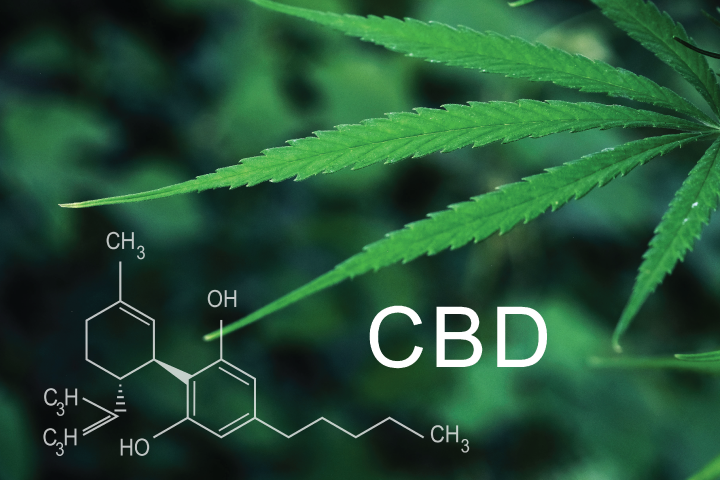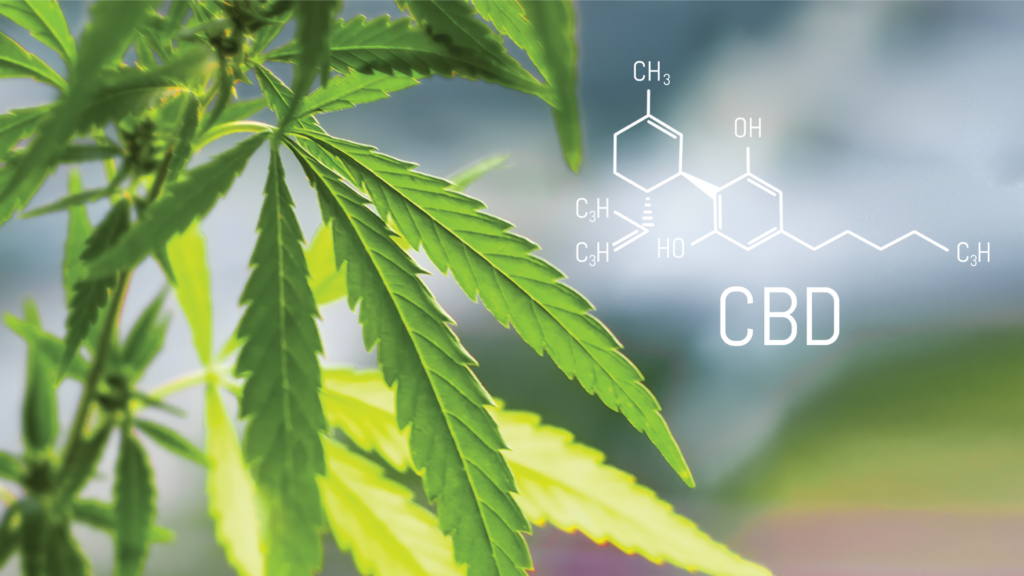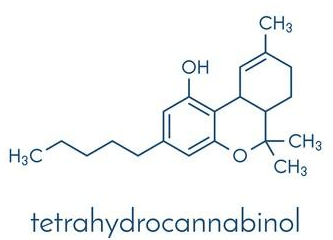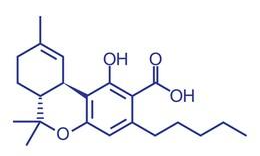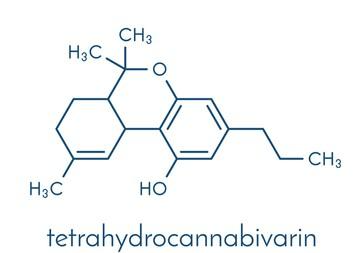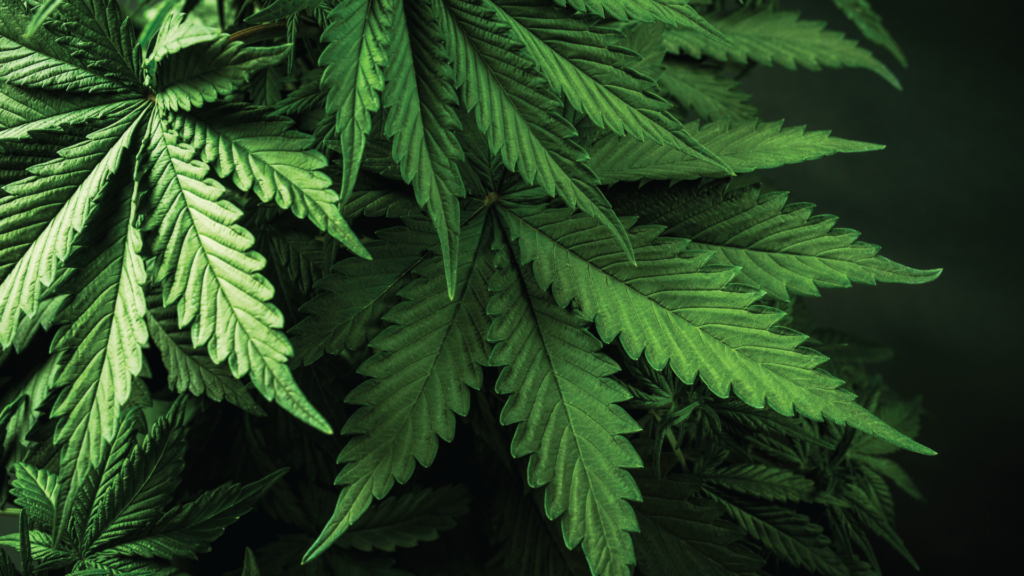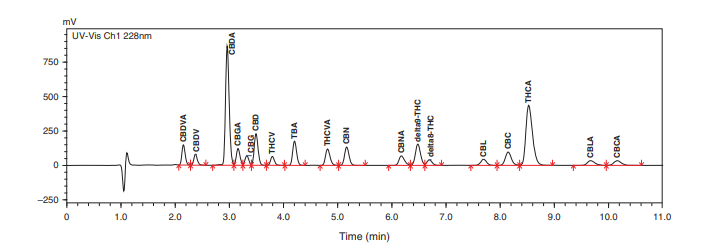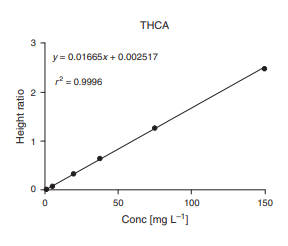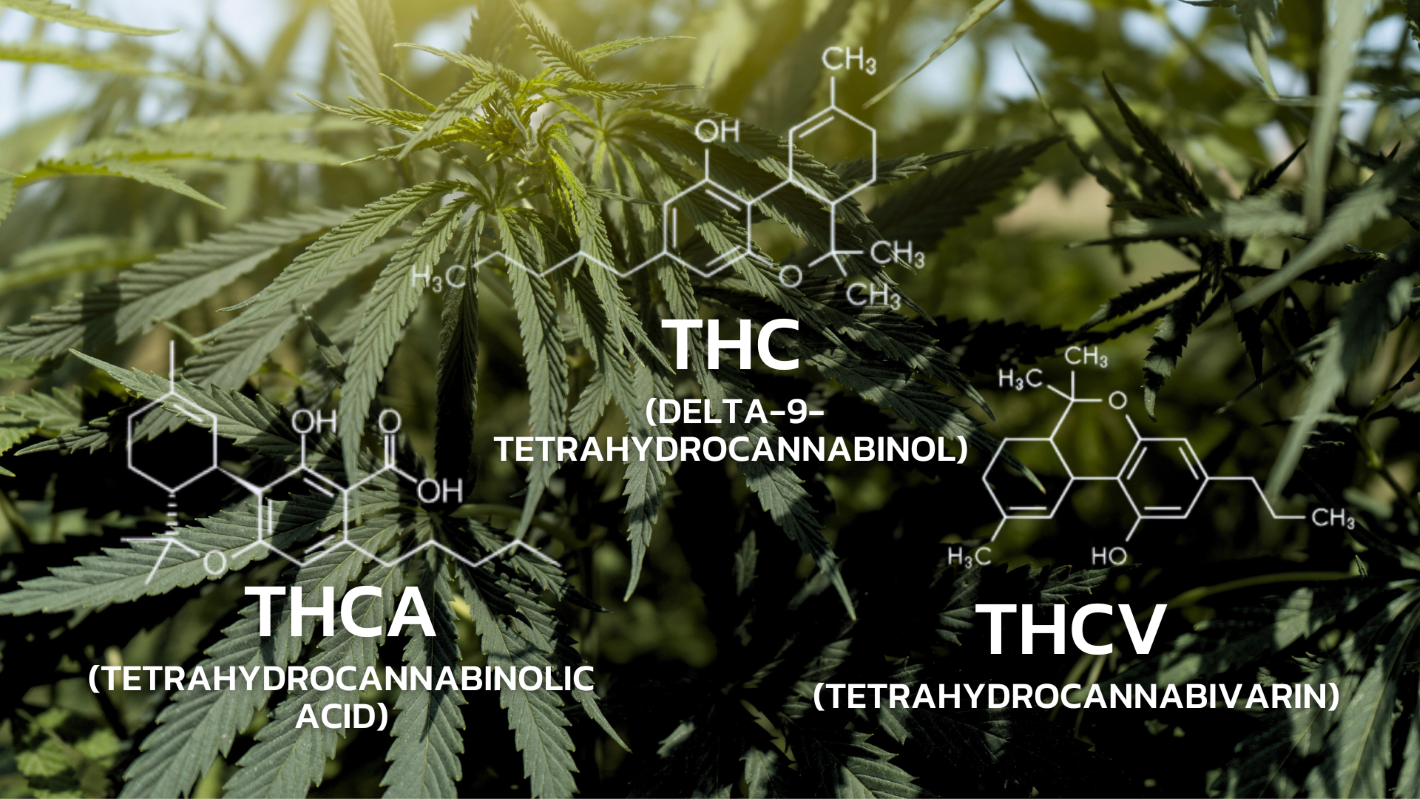
Information on testing services for the biomarkers of cannabis such as THC, THCA, and THCV using the HPLC technique.
VISBIO Co., Ltd. offers analysis and testing services for the quantities of biomarkers such as THC, THCA or THCV in various products in the health and beauty industries, the food and beverage industries. These compounds are extracted from cannabis, primarily using the female flower’s.
The major compounds in the Cannabinoids group are THC (Delta-9-Tetrahydrocannabinol), which has neurological effects. Proper use of THC helps alleviate symptoms like nausea, vomiting from chemotherapy, pain relief, especially neuropathic pain, stimulates appetite, anti-inflammatory, and muscle spasm reduction. However, excessive consumption can lead to intoxication, hallucinations, impaired perception and cognitive difficulties. THCA (Tetrahydrocannabinolic acid) is a non-psychoactive compound that helps with anti-inflammatory, relief of nausea and vomiting, pain relief. THCV (Tetrahydrocannabivarin) is an antagonist to THC’s intoxication and addiction. THCV prevents THC from binding to receptors, reducing its neurological effects. Furthermore, THCV also helps alleviate symptoms of epilepsy. When using cannabis extracts in products, it is essential to maintain standardization by ensuring a consistent level of active compounds and keeping THC levels in check, avoiding excess amounts. Additionally, there should be no contamination or adulteration, and the quality and quantity of cannabis extracts must be controlled to ensure safety and effectiveness.
Getting to Know Cannabis
Cannabis, scientifically known as Cannabis sativa L. subsp. indica (Lam.), has been used as a medicinal remedy in ancient pharmacopeias for thousands of years. Its documented usage dates back to the 8th century in ancient Arabic pharmacopeias and is also found in traditional Chinese, Thai and British pharmacopeias. Cannabis is a robust plant that thrives in warm climates, reaching approximately 2-4 feet in height, with leaves that are palmate, resembling either hemp or marijuana leaves. A single leaf typically contains about 5-7 palmate lobes on a single stem.
Cannabis is permitted for medicinal and recreational use in many countries. It consists of numerous active chemical compounds, with cannabinoids being a major group, primarily found in the female flower’s trichomes. They are usually in the form of carboxylic acid or acid form, but when exposed to light and heat, they decarboxylate into their neutral form. The prominent cannabinoids with pharmacological effects are THC (Delta-9-Tetrahydrocannabinol) and CBD (Cannabidiol).
However, cannabis comprises various cannabinoids and other compounds like flavonoids, steroids, terpenes, fatty acids, and more, and some of them are present in trace amounts, accurately analyzing and quantifying these substances is not a straightforward task. Due to the limitations of current analytical standards, various techniques have been developed for qualitative and quantitative analysis of these substances. High-Performance Liquid Chromatography (HPLC) is one of the preferred methods for the qualitative and quantitative analysis of different compounds in cannabis, allowing for the quality control of extracts or herbs.
Cannabis extracts
Cannabis extracts are commonly derived from the female flowers of cannabis plants, which have high concentrations of chemical compounds. The major components are typically cannabinoids, including THC (Delta-9-Tetrahydrocannabinol) and CBD (Cannabidiol). These two substances are fat-soluble and are often extracted using oils. Each cannabis plant strain has varying levels of THC and CBD in different proportions. These levels depend on environmental conditions and cultivation techniques, leading to variations in the extracted from different sources.
Cannabis extracts come in various forms today, such as oils, resin and have been developed into various products, including cosmetics, food, bakery, beverages, dietary supplements or prescription medications.
What is THC (Delta-9-Tetrahydrocannabinol)?
THC (Delta-9-Tetrahydrocannabinol) has the molecular formula C21H30O2 and is one of the most extensively researched and widely used cannabinoids found in cannabis. It dissolves well in oil and appears as a clear liquid. It is derived from CBGA (Cannabigerolic acid) and is transformed into THCA (Tetrahydrocannabinolic acid) when exposed to heat, decarboxylating and becoming THC (Delta-9-Tetrahydrocannabinol). Therefore, if fresh leaves or flowers with a high THC content are cooked at high temperatures for an extended period, it results in higher THC levels. However, this may cause intoxication, increased heart rate.
THC is a psychoactive substance. When used in appropriate amounts, it can alleviate symptoms such as nausea and vomiting from chemotherapy, pain, especially neuropathic pain, stimulate appetite, and have anti-inflammatory effects while reducing muscle spasms. Still, when consumed in excessive amounts over a prolonged period, it may lead to THC tolerance, requiring increased consumption and potentially causing dependency issues.
Figure 1. Structure of THC.
What is THCA (Tetrahydrocannabinolic acid)?
THCA (Tetrahydrocannabinolic acid) has the molecular formula C21H30O2 and is one of the cannabinoids that are commonly found in the female flowers of non-fertilized cannabis plants. THCA is derived from an alkylation reaction between Geranyl phosphate (GPP) and Olivetolic acid (OLA), resulting in a compound known as CBGA (Cannabigerolic acid). Subsequently, CBGA is transformed into THCA (Tetrahydrocannabinolic acid). When THCA is exposed to heat, it undergoes decarboxylation, converting into THC (Delta-9-Tetrahydrocannabinol), which is one of the extensively researched and widely used cannabinoids found in cannabis.
THCA is a non-psychoactive and has anti-inflammatory properties. It helps alleviate symptoms of nausea and vomiting and also provides pain relief.
Tetrahydrocannabinolic Acid
Figure 2.Structure of THCA
What is THCV (Tetrahydrocannabivarin)?
THCV (Tetrahydrocannabivarin) has the molecular formula C19H26O2 and is one of the important cannabinoids found in cannabis. It is derived from THCVA (Tetrahydrocannabivarinic acid), which is converted into THCV.
THCV is a substance that counteracts the effects of THC intoxication and addiction. THCV does not allow THC to bind to receptors, reducing the stimulating effects of THC on the nervous system. Additionally, THCV helps alleviate symptoms of epilepsy.
Figure 3. Structure of THCV
The Use of Cannabis Extracts: THC, THCA, and THCV in the Medical and Supplement Industries
Currently, cannabis extracts containing THC, THCA or THCV are being utilized in the dietary supplement industry to alleviate various conditions. For instance, THC helps with sleep, relaxation, muscle relief, nausea reduction and pain alleviation. THCA, on the other hand, aids in anti-inflammation, nausea and vomiting relief and pain reduction. THCV, in addition to counteracting THC’s intoxicating and addictive effects, also helps alleviate symptoms of epilepsy.
Furthermore, there have been developments in cannabis extracts for use in medicinal applications, predominantly in the form of cannabis oil administered under the tongue. When used in appropriate amounts, it has properties that help reduce pain, muscle spasms, and alleviate nausea and vomiting induced by chemotherapy. However, prolonged and frequent use may impact brain function and neurotransmitter production.
The medicine cannabis extract aren’t widely available to the general public and cannot be self-administered. Patients must seek treatment from licensed medical professionals. Additionally, medical personnel prescribing cannabis extract medication must undergo specialized training and be licensed to do so. Furthermore, the production of these medications must adhere to strict standards, certified by the Ministry of Public Health, ensuring consistent active ingredient levels and the absence of excessive THC. There should also be no adulterants, such as heavy metals or pesticides.
Example of Analyzing 17 Types of Phytocannabinoids in 11 Minutes Using HPLC Technique
Figure 1
Figure 2
Reporting the analysis results of 17 types of Phytocannabinoids in 11 minutes using the HPLC technique with a UV-Vis detector
From Figure 1, it shows the chromatogram of 17 types of Phytocannabinoids. By integrating the area under the curve, the quantities of the 17 different substances are calculated, compared to the standard substances. An example of Figure 2 displays the quantity of THCA that has been calculated.
Literature:
- กองควบคุมวัตถุเสพติด สำนักงานคณะกรรมการอาหารและยา, ตุลาคม 2563.
- Brenneisen R. “Chemistry and analysis of Phytocannabinoids and Other Cannabis Constituents” in Marijuana and the Cannabinoids. Humana Press, New Jersey, pp. 17-49, 2007.
- Galettis, Peter & Williams, Michelle & Gordon, Rebecca & Martin, Jennifer. (2021). A Simple Isocratic HPLC Method for the Quantitation of 17 Cannabinoids. Australian Journal of Chemistry. 74. 10.1071/CH20380.
- Hanus LO, Meyer SM, Munoz E, Taglialatela-Scafati O, Appendino G. Phytocannabinoids : a unified critical inventory. Nat Prod Rep 2016; 33(12) : 1357-92.
- De Petrocellis L, Ligresti A, Moriello AS, Allarà M, Bisogno T, Petrosino S, Stott CG, Di Marzo V. Effects of cannabinoids and cannabinoid-enriched Cannabis extracts on TRP channels and endocannabinoid metabolic enzymes. Br J Pharmacol. 2011 Aug;163(7):1479-94. doi: 10.1111/j.1476-5381.2010.01166.x. PMID: 21175579; PMCID: PMC3165957.
- Kathryn M. Nelson, Jonathan Bisson, Gurpreet Singh, James G. Graham, Shao-Nong Chen, J. Brent Friesen, Jayme L. Dahlin, Matthias Niemitz, Michael A. Walters, and Guido F. Pauli
- Journal of Medicinal Chemistry 2020 63 (21), 12137-12155.
- 10 คำถาม “กัญชง-กัญชา” เรื่องน่ารู้จาก “อภัยภูเบศร”, กรมสุขภาพจิต, 2564.
- โครงการสนับสนุนอุตสาหกรรมแปรรูปพืชกัญชง เพื่อตอบสนองเศรษฐกิจชีวภาพ (Bioeconomy) ปีงบประมาณ พ.ศ. 2564.
- บังอร ศรีพานิชกุลชัย, การใช้กัญชาเพื่อประโยชน์ทางการแพทย์, วารสารเภสัชศาสตร์อีสาน 2562; 15(4) : 1-26.
- ธนวัฒน์ ทองจีน และคณะ, การพัฒนาวิธีวิเคราะห์ปริมาณแคนนาบินอยด์ในใบกัญชาด้วยวิธี Ultra High Performance Liquid Chromatography, วารสารกรมวิทยาศาสตร์การแพทย์ 2564; 63 (3) : 505-523.
- ศรายุธ ระดาพงษ์, พราว ศุภจริยาวัตร และเมธิน ผดุงกิจ, ฤทธิ์ทางเภสัชวิทยาและพิษวิทยาของกัญชา, วารสารกรมวิทยาศาสตร์การแพทย์, 2564; 63 (1) : 219-232.
- บทความความรู้กัญชาทางการแพทย์ องค์การเภสัชกรรม.
